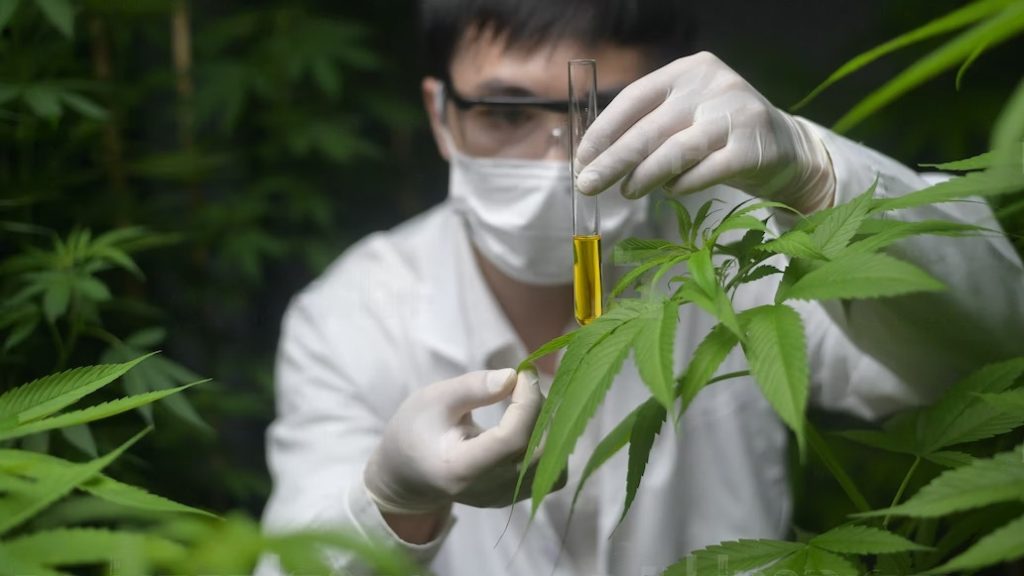In recent years, medical cannabis has gained significant attention for its potential therapeutic benefits in treating various health conditions. Central to the effectiveness of medical cannabis are two key compounds: tetrahydrocannabinol (THC) and cannabidiol (CBD). These cannabinoids interact with the body’s endocannabinoid system (ECS), influencing a wide range of physiological processes. Understanding how THC and CBD function can provide insights into their therapeutic applications and the differences between them.
- Tetrahydrocannabinol (THC): The Psychoactive Agent
THC is perhaps the most well-known cannabinoid in cannabis. It’s responsible for the psychoactive effects commonly associated with marijuana use. THC binds primarily to CB1 receptors in the brain and nervous system, altering neurotransmitter release and producing effects such as euphoria, relaxation, altered perception of time, and increased appetite. These properties make THC valuable for managing conditions like:
- Chronic Pain: THC’s ability to modulate pain perception can provide relief for conditions like neuropathic pain, arthritis, and migraines.
- Muscle Spasticity: Patients with multiple sclerosis (MS) or spinal cord injuries may benefit from THC’s muscle-relaxing effects.
- Nausea and Vomiting: THC has antiemetic properties, making it effective in reducing nausea associated with chemotherapy and other medical treatments.
- Cannabidiol (CBD): The Non-Psychoactive Counterpart
CBD, unlike THC, does not produce a “high.” It interacts indirectly with CB1 and CB2 receptors and influences various non-cannabinoid receptors and ion channels. This interaction modulates neurotransmitter release and affects functions such as pain perception, inflammation, and mood regulation. CBD’s therapeutic potential extends to:
- Anxiety and Depression: CBD shows promise in reducing symptoms of anxiety disorders and depression by enhancing serotonin signaling in the brain.
- Epilepsy: Epidiolex, a CBD-based medication, is FDA-approved for treating rare forms of childhood epilepsy, such as Dravet syndrome and Lennox-Gastaut syndrome.
- Inflammation: CBD’s anti-inflammatory properties make it useful in conditions like arthritis and inflammatory bowel diseases.
- Synergistic Effects and the Entourage Effect
While THC and CBD have distinct therapeutic properties, they often work better together. The entourage effect suggests that the combination of multiple cannabinoids, terpenes, and other compounds found in cannabis enhances their therapeutic effects compared to isolated cannabinoids. For example, CBD can mitigate some of THC’s potential side effects, such as anxiety and rapid heart rate, while enhancing its therapeutic benefits.
- Legal and Regulatory Considerations
The legal status of THC and CBD varies globally and within different jurisdictions. THC remains a controlled substance in many places due to its psychoactive effects and potential for abuse, while CBD’s legal status has relaxed in many regions, particularly when derived from hemp with low THC content. Understanding local regulations is crucial for patients and healthcare providers considering medical cannabis treatments.
- Considerations for Medical Use
Before using medical cannabis, patients should consult healthcare professionals knowledgeable about cannabis therapeutics. Factors such as dosing, administration methods (smoking, vaporizing, edibles, oils), and potential drug interactions need careful consideration. Tailoring treatment to individual needs and monitoring for efficacy and side effects are essential for optimizing therapeutic outcomes.
Conclusion
THC and CBD are integral components of medical cannabis, each offering unique therapeutic benefits. While THC provides pain relief and symptom management with psychoactive effects, CBD offers non-intoxicating relief for various conditions. Together, they exemplify the diverse potential of cannabinoids in modern medicine. Continued research into their mechanisms of action and clinical applications will further illuminate their roles in enhancing patient care and well-being.


